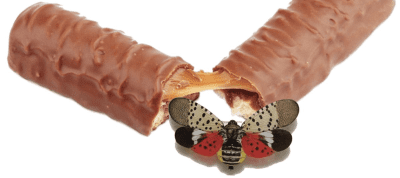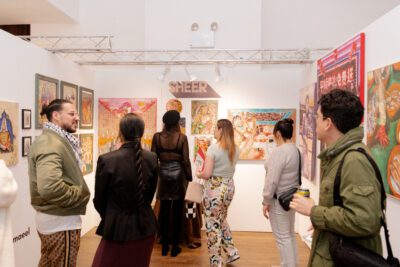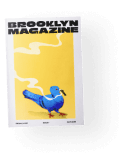Mystery Revealed: The Famous Hidden Taste Behind Pumpkin Spice Lattes
How did the pumpkin spice latte get so popular? Not just popular but mega-popular, so ubiquitous that it could become a cultural symbol of “basicness,” laden with psychic baggage about gender and race and pop culture itself? How did it come to inspire copycat drinks at virtually every other coffee chain and pumpkin-spice editions of nearly every snack food imaginable, from breakfast cereal to yogurt to potato chips?
It’s counterintuitive. Pumpkin—a catch-all term we use to refer to various species of winter squash—doesn’t seem like a flavor well suited to coffee. No one has tried to replicate the PSL’s success with other gourds; there’s no zucchini frappuccino or butternut squash mocha. In a brief cultural history of the pumpkin at the Awl, Johannah King-Slutzky uses Sabrina the Teenage Witch to point out that the idea of such a concoction was laughable as recently as the 1990s. In one episode, a character expresses surprise that no one’s buying a cafe’s “special pumpkin-flavored coffee,” and Sabrina replies, “Do you think it has anything to do with the fact that it’s a hideous shade of orange and tastes like pumpkin?”
But the thing about the PSL is that it doesn’t taste like pumpkin and was never supposed to. In fact, it didn’t contain any pumpkin at all until 2015. The recipe “doesn’t actually have a note of pumpkin in it,” and it was almost named the “fall harvest latte,” which would have cut pumpkins out of the equation except as implicit cornucopia stuffers alongside apples and multicolored corncobs. What a PSL is really meant to taste like is “pumpkin-pie spice,” a blend of cinnamon, nutmeg, ginger, cloves, and/or allspice used, along with lots of sugar and dairy, to make pumpkin pie taste like a dessert rather than just…squash.
It makes sense that a sugary coffee drink flavored like pumpkin-pie spice would do well in the United States. Americans associate the taste of pumpkin pie with holidays, family, togetherness—maybe even patriotism, because of the role it plays in our founding-mythic stories about the first Thanksgiving. In the aforementioned Awl essay, King-Slutzky posits various reasons for the popularity of the pumpkin, including feelings of nostalgia and decadence.
But is that enough to explain why the PSL is everywhere? It’s not like pumpkin pie is America’s favorite food ever. Most of us have a couple slices once or twice a year. Besides, the PSL’s popularity extends far beyond U.S. borders. It’s “the UK’s top-selling seasonal beverage” and is sold in some 50 countries, most of which have no tradition of eating pumpkin pie.
To truly understand the PSL phenomenon, we need to take a closer look at its ingredients. Unfortunately, the label on the pumpkin-spice syrup sold on Starbucks’s website isn’t super helpful. It lists sugar, condensed milk, and pumpkin puree as the primary ingredients, and though it mentions natural flavors, like most soft-drink labels, it doesn’t go into specifics about them.
But food scientist Kantha Shelke of the Institute of Food Technologists knows a lot of specifics about natural flavors. In a “Pumpkin Spice 101” primer on IFT’s website, she explains which (naturally occurring) chemical compounds companies like Starbucks use to convey all the flavors you find in a container of pumpkin-pie spice: “cinnamic aldehydes for cinnamon, eugenol for clove or allspice, terpenes such as sabinene for nutmeg, and zingiberene for ginger,” as well as vanillin and cyclotene to evoke butter and other non-spice elements you might find in a pie.
What else contains cinnamic aldehydes, eugenol, sabinene, and vanillin? Hint: It’s another universally popular drink beloved within and without the United States that has also become freighted with some heavy cultural symbolism. That’s right—Coca-Cola.
Of course, Coke doesn’t break down which natural flavors they’re using on their labels either, and the exact recipe is kept famously secret. But the primary flavors in Coke include cinnamon, nutmeg, and vanilla, and these are the compounds that produce those flavors. Certainly the mysterious original recipe uncovered by This American Life included cinnamon oil (which contains cinnamic aldehydes and eugenol), nutmeg oil (which contains sabinene), and vanilla (which—surprise, surprise—contains vanillin). Plus there’s the hefty amount of sugar that governs the taste of Coke and pumpkin spice latte alike—39 grams of the stuff in 12 ounces of either drink. Granted, Coke also makes use of citrus oils, and it doesn’t have the espresso taste inherent in a PSL, but overall, the two flavor profiles are surprisingly similar.
I submit that that’s why pumpkin spice lattes are so popular, in the United States and all over the world. It’s not because of nostalgia or basicness, at least not primarily. It’s because everyone loves Coke, and PSLs are, in essence, hot milky Cokes.
This makes the recent demand to include actual pumpkin in PSLs, a decade after they came on the market, simultaneously more and less strange. More strange because no one’s exactly begging for gourd-flavored Coke, but less strange because no one wants—or, more accurately, current consumer trends make it taboo—to let fond memories of homemade baked goods anywhere near the idea of a chemical mixture engineered in a lab to be hyperpalatable. It’s bad enough to contemplate wily scientists taking advantage of your affection for holiday traditions to feed you such chemicals. What if, somewhere in the back of your mind, you suspected they’d preyed upon your love for your grandma’s pie to slip you an alternate version of Coca fucking Cola, the apotheosis of artificial food and corporate greed?
The woman who led the real-pumpkin charge against Starbucks is Vani Hari, whose blog Food Babe is an example par excellence of the recent popular demand for authentic, natural food. It’s the kind of blog that, with hardly any basis in science, advocates an arbitrary and impossible culinary purity, free from ill-defined “toxins” and “chemicals” (as if water itself were not a chemical). She generated enough outrage that Starbucks removed artificial coloring from the PSL recipe and added real pumpkin puree. Of course, Hari isn’t satisfied; the drink is still full of verboten ingredients like carageenan and questionably sourced milk.
But for everyone else who has fallen in love with the spicy sweetness of the PSL and doesn’t expect it to be natural or pure, never fear. According to Kantha Shelke, the addition of pumpkin “does very little other than appease those who wanted to see real pumpkin on the list of ingredients.” The new formula “replicate[s] the flavor of the original PSL that was made without real pumpkin. The flavor and texture are the same but with a different set of ingredients.” With or without our favorite winter squash and everything it has come to stand for, the pumpkin spice latte remains an unhealthy, delicious, hot, milky Coke.
You might also like 























